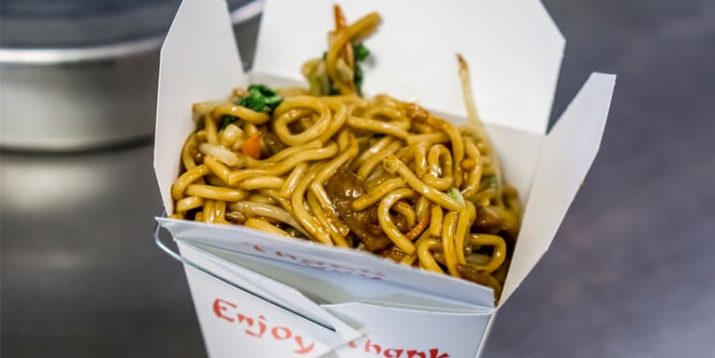I Want to Eat EVERYTHING. Help!

Some days I open the fridge and nothing appeals to me. And then there are those days when nothing will suffice, when I want to eat every major “food group”: steak, pizza, chocolate and chips… that’s protein, vegetables, dairy, and fat, for those of you who are not experts in the art of rationalization. (Hey, Congress essentially said the tomato sauce in pizza is equivalent to half a cup of vegetables, so that’s good enough for me.)
I think everyone has those days. What’s a hungry person to do?
6 Tips for Appetite Management
1. Consider Your Craving
Consider what you really want to eat. There’s no point in eating everything in sight only to find that you’re still not satisfied, and that there’s a food that you really want instead. When I find myself eating chocolate, chocolate chip cookies, cottage cheese, and yogurt, I realize that all I really want is some milk. (It’s weird, I know, but it’s true).
Plus, if you practice mindfulness, you’ll likely eat better. A study published in the journal Appetite showed that participants who used mindfulness intervention reported significantly lower cravings for food after the intervention compared to those who didn’t.
2. Plan Ahead
If we could all just be those responsible people who plan out our meals at the beginning of the week, or at least the beginning of the day… But, on those Sundays or weekday mornings when you just can’t get your meals together in advance, stopping to consider the healthfulness of the meal you’re about to order can help.
A study published in Psychological Science journal found that the consideration of tastiness was processed 195 milliseconds earlier than healthfulness during the choice process. So, I need to wait a minute before I call the pizza delivery guy; in those milliseconds, I may realize that pizza is not a vegetable.
3. Portions Matter, But Not all Calories Are Equal
A good way to manage your portions is to plate dinners in the kitchen, rather than setting all of the food out on the table, buffet-style. If you dole out the correct portions of each macronutrient, you shouldn’t need to go back for seconds.
But, again, you’re human and sometimes you get really hungry.
A review of studies on the topic of portion control and its role in weight management suggests that while portion control is important to managing weight, sometimes you’re just not satisfied.
Here’s a way to quell hunger without overindulging: If you wait 20 minutes after you eat the first serving, and find that you’re still truly hungry, nibble on some salad or vegetables, and maybe a bit more lean protein. But forego another piece of bread or full slice of lasagna.
Although it sounds obvious, some people like the act of eating itself more than what they’re eating, so enjoying some more low-density food (within reason) feels less restrictive.
4. Eat Protein First
A lot of emphasis is placed on what or how you eat something, but less thought is given to the order in which you eat foods. One study evaluated the effect of macronutrients on food intake to see what happened when participants ate either a high-protein dish or a fat-rich dish at the same time, as a first course of a varied meal, or as a snack two hours before a varied meal. Turns out the high-protein food impacted satiety both during and post-meal the most. When the protein and fat were eaten together, participants felt satisfied before becoming full. The snack didn’t impact satiety for a meal eaten two hours later.
5. Move Before You Grub
The debate on whether exercise makes you hungrier or suppresses your appetite continues to rage on. It seems to depend on what type of exercise you do. According to a study in the International Journal of Obesity, high intensity intermittent exercise (HIIT) and very high intensity intermittent exercise reduced appetite better than moderate or no exercise in inactive, overweight men.
6. Feel Like Eating an Apple?
The best way to manage your appetite is to: “always have something handy so that you don’t go too long without food, and then overcompensate,” says Jessica Setnick, M.S., R.D., C.S.S.D.
But wait! Don’t eat that apple just yet. First, to determine whether your appetite is related to real hunger or emotion, she says try the Apple Test. “When having a craving, ask yourself if you would eat an apple [or carrot sticks or chicken breast if you don’t like apples].” If the answer is yes, you have identified genuine hunger. The theory here: Real, healthy foods will appear more appetizing when your body actually needs fuel. But, if the answer to the question is no, “Consider the possibility that you may be experiencing a different empty feeling such as loneliness, boredom, etc. that eating will not solve.”
